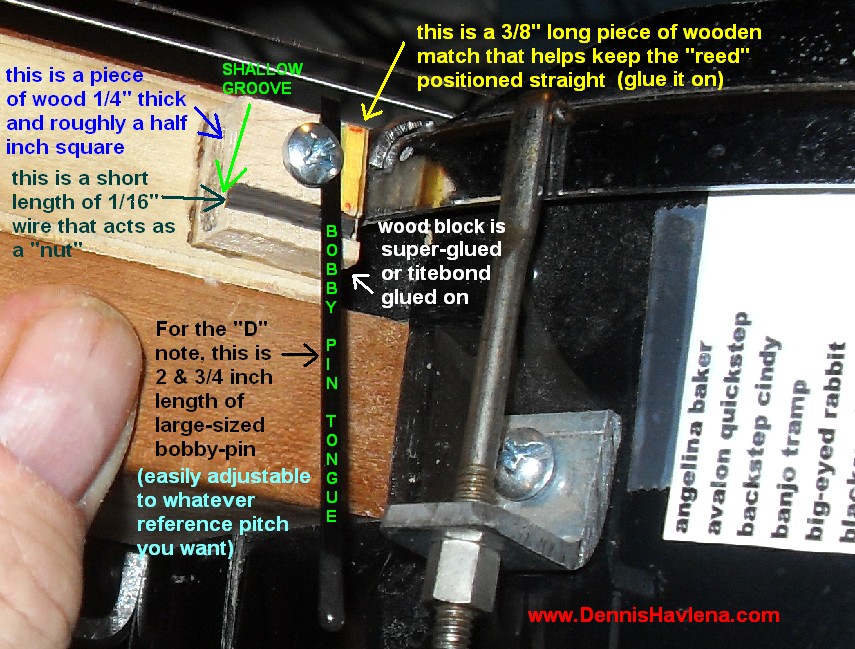
Anyhow, I came up with this super simple, on-instrument pitch reference constructed from a few penny's worth of materials: one large-sized bobby pin, one screw and a few bits of scrap wood. I super-glued this tiny thing permanently to the shell of my home-made banjo (players of fancy instruments may opt to attach it another way) & always have a pitch reference handy. If, of course, you'd rather not glue this thing to your instrument, you might do as I also did -- I peeled-back a small bit of "padding" from my fiddle case -- down to the bare wood & likewise installed one on the inside of this case. Just make sure it's in an out-of-the-way place inside the case. I keep mine in the key of D (my very favoirite fiddling and clawhammering key) but obviously any note will work fine. UPDATE a week later: Been experimenting along these lines. I found that a reed from a discarded harmonica makes a nice "on-instrument" pitch reference too. Less in-the-way than above bobbypin arrangement. This photo is self -explanitory:
Click here to access
my webpage

These harmonica-reed twangers, while not loud, can be easily heard when
plucked. The tailpiece-mounted version is a considerably louder than the
headstock-mounted version.
Dennis Havlena Webpage at www.DennisHavlena.com